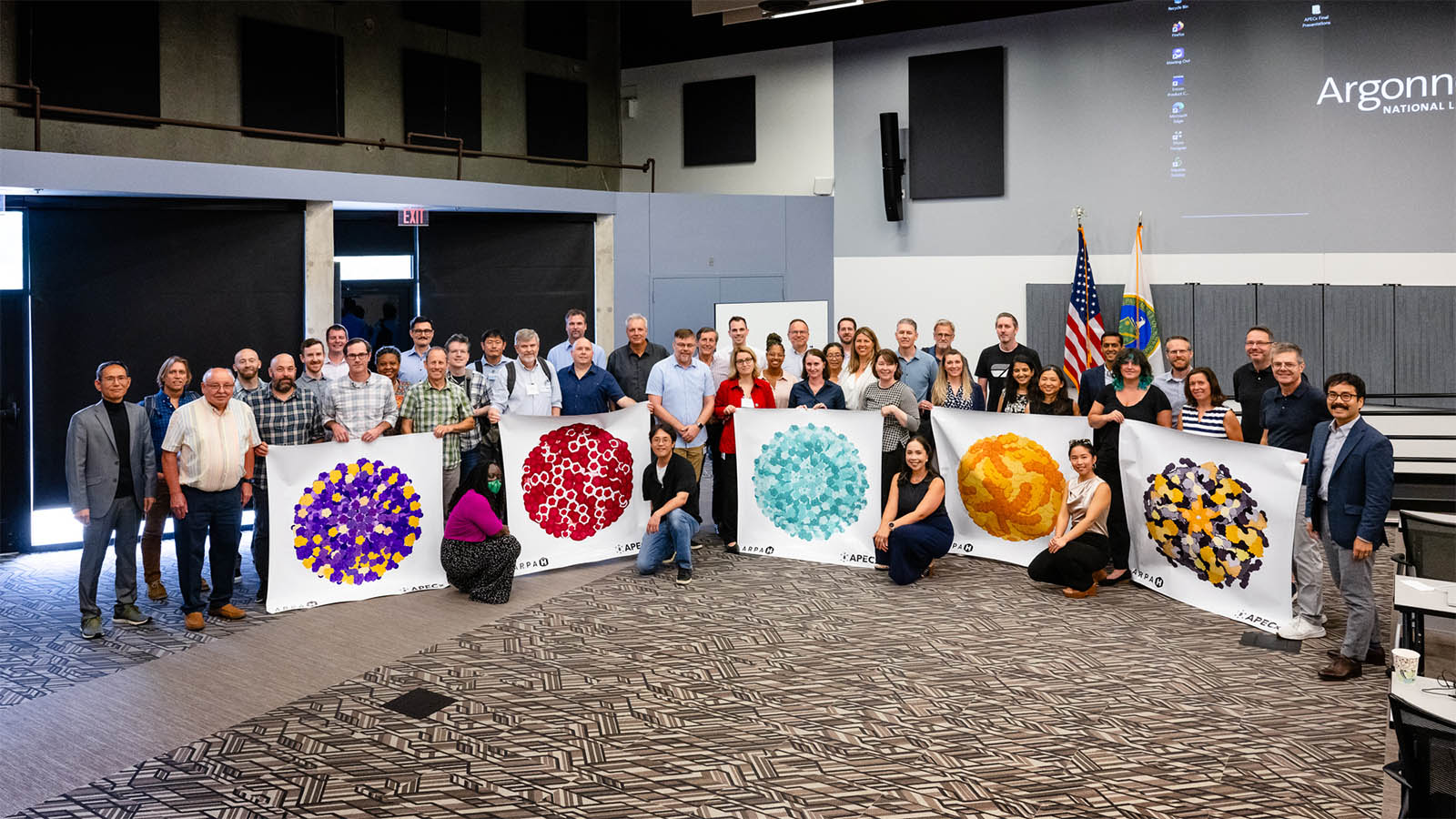The U.S. Department of Energy’s (DOE) Argonne National Laboratory will use its world-leading capabilities in artificial intelligence (AI) and high performance computing to research novel ways to fight cancer and transform vaccine discovery.
The two awards, totaling up to $21.7 million, are from the Advanced Research Projects Agency for Health (ARPA-H), part of the U.S. Department of Health and Human Services. Established in 2022, ARPA-H’s mission is to accelerate transformative biomedical research leading to better health outcomes for everyone. The Argonne awards aim to advance this mission by utilizing the lab’s capabilities in AI, high performance computing, simulation and structural biology.
“Argonne is at the forefront of AI research, playing an integral role in applying innovative methods to solve complex scientific and engineering challenges. This funding will allow us to apply our efforts to some of our hardest problems, like eliminating cancer and addressing potential global pandemics,” said Laboratory Director Paul Kearns.
The Integrated AI and Experimental Approaches for Targeting Intrinsically Disordered Proteins in Designing Anticancer Ligands (IDEAL) project received $15 million to explore ways to slow or stop the growth of tumors that don’t respond to medication. The project will be conducted in partnership with the University of Chicago Medicine Comprehensive Cancer Center.
Scientists will use AI methods including foundation models — large-scale models trained on vast datasets — that can reveal insights and discover patterns. Researchers will use Argonne’s unparalleled computing and experimental facilities: the Aurora exascale supercomputer at the Argonne Leadership Computing Facility (ALCF) and the ultrabright X-rays at Argonne’s Advanced Photon Source (APS). The ALCF and APS are DOE Office of Science user facilities.
“The drug discovery process is long, inefficient and costly, with the majority of new drugs failing during clinical trials,” said Kunle Odunsi, MD, PhD, director of the University of Chicago Medicine Comprehensive Cancer Center; dean for Oncology, Biological Sciences Division; and The AbbVie Foundation Distinguished Service Professor of Obstetrics and Gynecology. “Patients with cancer don’t have time to wait for new treatments, so there is a strong need to compress the drug discovery timeline, and we aim to do that with novel synergistic approaches that take advantage of Argonne’s supercomputational capabilities and the strength in chemistry and cancer biology at the University of Chicago.”
Argonne also received up to $6.7 million to support the Antigens Predicted for Broad Viral Efficacy through Computational Experimentation (APECx) program. APECx aims to transform vaccine antigen discovery by developing toolkits that target entire viral families. If successful, it will demonstrate the possibility of broadly effective vaccines against multiple viral threats including cancer, autoimmune disease, chronic illness, emerging infections, and potential pandemics.
“We are excited to work with ARPA-H and partners who are leading experts in their fields to move the needle on global health issues,” said Argonne’s Daniel Schabacker, principal investigator on these projects.
“This substantial investment by ARPA-H will enable Argonne to further our efforts in leveraging AI and computing to better understand complex health-related challenges,” said co-investigator Thomas Brettin, strategic program manager in Argonne’s Computing, Environment and Life Sciences directorate.
The Argonne Leadership Computing Facility provides supercomputing capabilities to the scientific and engineering community to advance fundamental discovery and understanding in a broad range of disciplines. Supported by the U.S. Department of Energy’s (DOE’s) Office of Science, Advanced Scientific Computing Research (ASCR) program, the ALCF is one of two DOE Leadership Computing Facilities in the nation dedicated to open science.
About the Advanced Photon Source
The U. S. Department of Energy Office of Science’s Advanced Photon Source (APS) at Argonne National Laboratory is one of the world’s most productive X-ray light source facilities. The APS provides high-brightness X-ray beams to a diverse community of researchers in materials science, chemistry, condensed matter physics, the life and environmental sciences, and applied research. These X-rays are ideally suited for explorations of materials and biological structures; elemental distribution; chemical, magnetic, electronic states; and a wide range of technologically important engineering systems from batteries to fuel injector sprays, all of which are the foundations of our nation’s economic, technological, and physical well-being. Each year, more than 5,000 researchers use the APS to produce over 2,000 publications detailing impactful discoveries, and solve more vital biological protein structures than users of any other X-ray light source research facility. APS scientists and engineers innovate technology that is at the heart of advancing accelerator and light-source operations. This includes the insertion devices that produce extreme-brightness X-rays prized by researchers, lenses that focus the X-rays down to a few nanometers, instrumentation that maximizes the way the X-rays interact with samples being studied, and software that gathers and manages the massive quantity of data resulting from discovery research at the APS.
This research used resources of the Advanced Photon Source, a U.S. DOE Office of Science User Facility operated for the DOE Office of Science by Argonne National Laboratory under Contract No. DE-AC02-06CH11357.
Argonne National Laboratory seeks solutions to pressing national problems in science and technology by conducting leading-edge basic and applied research in virtually every scientific discipline. Argonne is managed by UChicago Argonne, LLC for the U.S. Department of Energy’s Office of Science.
The U.S. Department of Energy’s Office of Science is the single largest supporter of basic research in the physical sciences in the United States and is working to address some of the most pressing challenges of our time. For more information, visit https://energy.gov/science.
